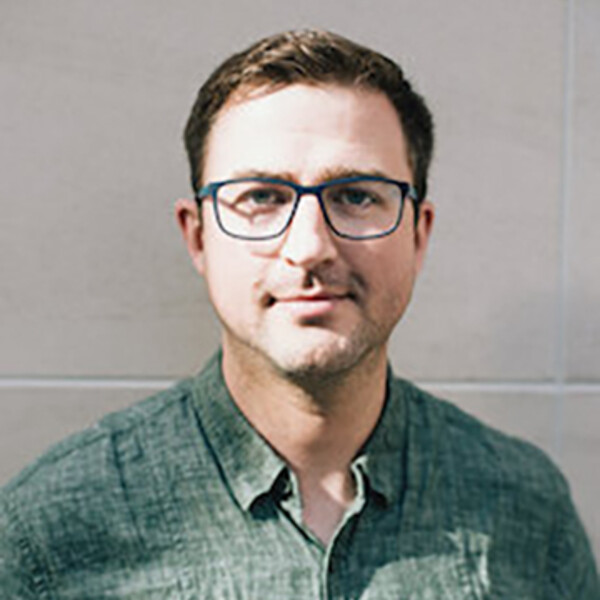Shane Harding
PhD, University of Toronto

At A Glance
- Our research is focused on how the DNA damage response impacts cellular signaling and physiology
- We explore how sensing and signaling from DNA double strand breaks changes chromatin structure, transcription and genome organization
- We study how DNA damage from cancer treatments like radiotherapy induces inflammatory signaling and the impact this has on immunotherapies like immune checkpoint blockade
- Our work involves extensive collaboration with other scientists and clinicians
Short Bio
Shane Harding is a Scientist at the Princess Margaret Cancer Centre, University Health Network, and Assistant Professor in the Dept. of Medical Biophysics at the University of Toronto. Dr. Harding earned his PhD in Medical Biophysics in the lab of Robert Bristow at the University of Toronto. He then went on to a Postdoctoral Fellowship at the University of Pennsylvania in the lab of Roger Greenberg. Dr. Harding opened his own Toronto laboratory in 2018.
Research Synopsis
DNA damage occurs as a consequence of normal cellular processes and from environmental exposures. Cellular changes that result from this damage contribute to the normal aging process and to the development of diseases, most notably cancer. To counteract this damage cells have signaling pathways that sense and repair these lesions. On the other hand, treatments for cancer such as radiotherapy and some chemotherapeutics rely on delivering large amounts of DNA damage that overwhelm the cell and cause cell death. The major goals in the laboratory are to understand the contribution of DNA damage and its cellular signaling to pathogenesis, and to develop more effective methods for treating cancer.
The lab is particularly focused on how the DNA damage response interacts with ongoing cellular processes, such as transcription. Using a combination of biochemistry, molecular biology, and genetic methods we are exploring how the DNA damage response elicits changes in cellular physiology and genome organization that occur during cancer development and therapy. We are also focused on how radiotherapy can initiate cellular signaling paradigms that influence patient responses to immunotherapy. In collaboration with our clinical colleagues our aim is to take these studies in fundamental cell biology and use them to improve the treatment of cancer while reducing unwanted side-effects in patients.
Recent Publications
- MacDonald KM, Nicholson-Puthenveedu S, Tageldein MM, Khasnis S, Arrowsmith CH, Harding S. Antecedent chromatin organization determines cGAS recruitment to ruptured micronuclei. Nature Communications, 2023, 2;14(1):556.
- MacDonald KM, Benguerfi S, Harding SM. Alerting the immune system to DNA damage: micronuclei as mediators. Essays Biochem, 2020, 64(5):753-764.
- Chen J, Harding SM, Natesan R, Tian L, Benci JL, Li W, Minn AJ, Asangani IA, Greenberg RA. Cell Cycle Checkpoints Cooperate to Suppress DNA- and RNA-Associated Molecular Pattern Recognition and Anti-Tumor Immune Responses. Cell. 2020, 1;32(9):108080.
- Harding SM, Benci JL, Iranto J, Discher DE, Minn AJ, Greenberg RA. Mitotic progression following DNA damage enables pattern recognition within micronuclei. Nature, 2017, 548: 466-470.
- Irianto J, Xia Y, Pfeifer CR, Athirasala A, Ji J, Alvey C, Tewari M, Bennett RR, Harding SM, Liu AJ, Greenberg RA, Discher DE. DNA damage follows repair factor depletion and portends genome variation in cancer cells after pore migration. Current Biology, 2017, 27(2):210-223.
- Harding SM and Greenberg RA. Choreographing the Double Strand Break Response: Ubiquitin and SUMO control of Nuclear Architecture. Frontiers in Genetics, 2016, 7:103.
- Harding SM, Boiarsky JA, Greenberg RA. ATM Dependent Silencing Links Nucleolar Chromatin Reorganization to DNA Damage Recognition. Cell Reports, 2015, 13(2):251-9.
- Cui L, Tse K, Zahedi P, Harding SM, Zafarana G, Jaffray DA, Bristow RG, Allen C. Hypoxia and cellular localization influence the radiosensitizing effect of gold nanoparticles (AuNPs) in breast cancer cells. Radiation Research, 2014, 182(5):475-88.
- El Ghamransni S, Cardoso R, Halaby M, Zeegers D, Harding SM, Kumareswaran R, Yavorska T, Chami N, Jurisicova A, Sanchez O, Prakash Hande M, Bristow RG, Hakem R, Hakem A. Cooperation of Blm and Mus81 in Development, Fertility, Genomic Integrity and Cancer Suppression. Oncogene, 2015, 34(14):1780-9
- Shibata A, Moiani D, Arvai AS, Perry J, Harding SM, Genois MM, Maity R, van Rossum-Fikkert S, Kertokalio A, Romoli F, Ismail A, Ismalaj E, Petricci E, Neale MJ, Bristow RG, Masson JY, Wyman C, Jeggo PA, Tainer JA. DNA double-strand break repair pathway choice is directed by distinct MRE11 nuclease activities. Molecular Cell, 2014 53(1):7-18.
- Harding SM and Bristow RG. Discordance Between Phosphorylation and Recruitment of 53BP1 in Response to DNA Double Strand Breaks. Cell Cycle, 2012, 11(7):1432-44.
- Harding SM, Coackley C, Bristow RG. ATM-dependent phosphorylation of 53BP1 in response to genomic stress in oxic and hypoxic cells. Radiotherapy and Oncology, 2011 99(3):307-12.
- Al Rashid ST*, Harding SM*, Law C, Coackley C, Bristow RG. Protein-protein interactions occur between p53 phosphoforms and ATM and 53BP1 at sites of exogenous DNA damage. Radiation Research, 2011 175(5):588-98 (*Equal Contribution).
Graduate Students
Cindy Ha
Kate MacDonald
Maha Mohamed Tageldein
